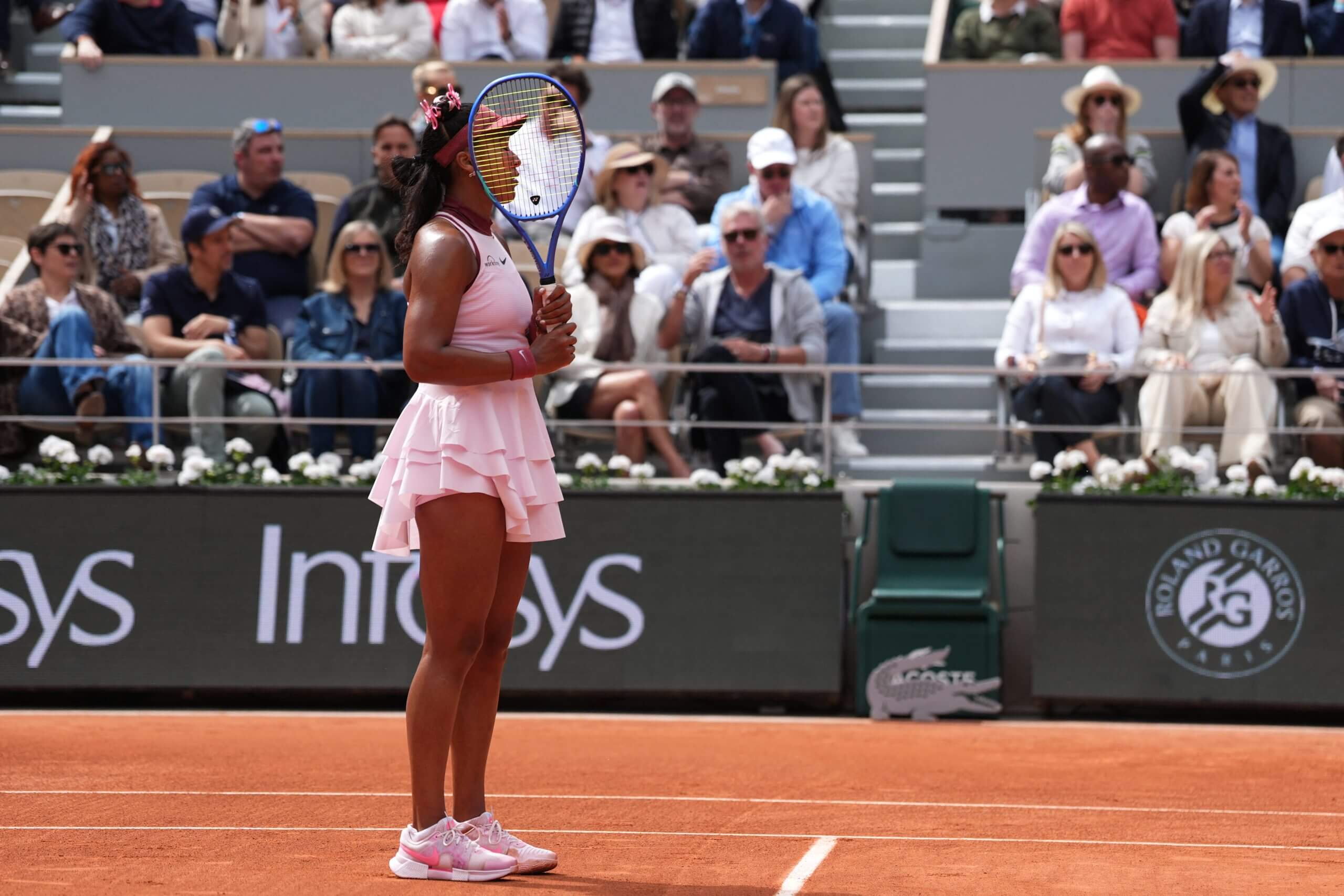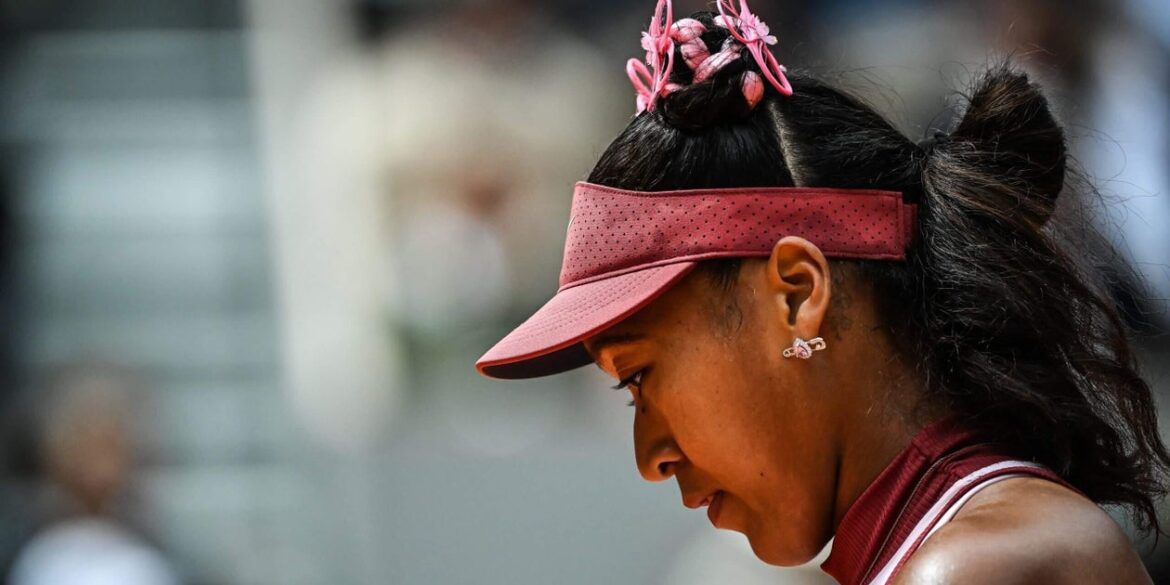ROLAND GARROS, PARIS — Everyone has them. Those places that always seem to bring pain.
For Naomi Osaka, it’s Roland Garros, and it goes far beyond the red clay courts that have always felt unnatural to a self-described “hard-court kid.”
She has never made it past the first week here. In 2020, she skipped the French Open altogether. The next year, she pulled out, following a standoff with tournament organizers over mandatory appearances at post-match news conferences while she managed the impact of anxiety and depression on her tennis and her health.
Monday, she took a one-set lead against Paula Badosa, the No. 10 seed and the latest in a series of brutal early opponents for Osaka at Grand Slams. She did it by flowing through a tiebreak, taking the match off the Spanish player’s racket the way she has done to so many over the years.
Then her hopes slipped away, first in a flood and then more slowly and painfully. After losing the second set 6-1, Osaka found herself caught between decisiveness and caution, break point down after calmly setting up the opportunity to see off the danger. She pushed a backhand long, and three games later, Badosa was through, 6-7(1), 6-1, 6-4.
Roughly 90 minutes later, Osaka appeared, with puffy eyes, at a news conference. She was asked if these losses hurt more than they used to.
“Yeah,” she said.
Why?
“As time goes on, I feel like I should be doing better,” she said.
Then she couldn’t help but drift to the idea that haunts so many once-young tennis phenoms, especially a Black Japanese woman who grows up in America and is told that they are destined to become the next Serena Williams. Especially someone who wins their first Grand Slam title by beating Serena Williams, who was stuck in a maelstrom of anger at Arthur Ashe Stadium in New York City that soured what should have been a joyful moment.
For Osaka, born in Japan to parents who are Japanese and Haitian and largely raised in Florida, that impossible legacy has hit home every day since she hired Patrick Mouratoglou, Serena Williams’ coach of a decade, last fall.
“I hate disappointing people,” she said. “So even with Patrick, he goes from working with, like, the greatest player ever to, like, ‘What the f— this is?’. You know what I mean? Sorry for cursing, I hope I don’t get fined, but…”
Then the tears truly came. She left the dais for a few minutes to gather herself, and returned to answer another two questions, putting a brave face on another sad moment that was so different from the bittersweet one she lived through this time last year. And so different from the one three years ago, which began Osaka’s retreat from the elite that she has never quite rebounded from.

Naomi Osaka came agonizingly close to beating No. 10 seed Paula Badosa. (Dimitar Dilkoff / AFP via Getty Images)
In 2021, four days before the start of the French Open, Osaka announced that she would not do any news conferences in Paris. The message she posted, which compared forcing players to field negative questions after a loss to “kicking a person while they are down”, made plain the pain the sport was causing her.
Tennis leaders threatened to kick her out of that major, and subsequent ones. That she had stormed to four Grand Slam titles in three years, becoming the world No. 1, the world’s highest-paid female athlete and a fearless activist for civil rights, seemed to matter little.
Osaka withdrew from the tournament. Then she took a seven-week break from tennis that ended when she lit the flame at the Tokyo Olympics. Disappointing losses, another four months away from the game, injuries and comebacks followed, before Osaka gave birth to her daughter, Shai, and went on the extended hiatus that turned into the big comeback.
So often, a return to her former heights has always looked one big win away. Never more so than last year at Roland Garros, when she was a point away from beating the defending champion Iga Swiatek in the second round.
Swiatek came back from 3-5 down in the third set that afternoon, not in a storm of winners, but with the understanding that if she could just ask her to meet a moment she hadn’t experienced for a long time, Osaka might discover that the answer was just out of reach. The then-world No. 1 stole the match 7-5. They embraced at the net, in a meeting of players who have taken over tennis and assumed the role of world No. 1 in ways that don’t always align with public expectations.
Later, Osaka talked about the pain she had felt right after coming up just short.
“I cried when I got off the court, but then, I realized I was watching Iga win this tournament last year, and I was pregnant. It was just my dream to be able to play her. When I think of it like that, I’m doing pretty well,” she said. She was trying not to be too hard on herself.
Osaka also said that “the results aren’t resulting right now,” displaying a comfort that looked a world away Monday, when she found not being hard on herself to be as hard as it had ever been. She hasn’t made nearly the progress she thought she would during the past year.
During an interview on Saturday, Osaka compared the difficulty of her attempted comeback climb to her initial ascent to the top of the sport. That one hadn’t been so fast, either.
She was 20 when she toppled Williams at the 2018 U.S. Open. Belinda Bencic and Jelena Ostapenko, who were also born in 1997, had been ahead of her. “It was a little bit of a roller coaster,” she said of her formative late teenage years.
During her time away from the sport — essentially from the middle of 2022 until the start of 2024 — tennis changed on her. So many of the best players now can move and exert power.
“Everyone can finish the point,” Osaka said. “When I grew up, there were ‘pushers’ and there aren’t really pushers anymore. Everyone has the ability to finish the point when they want. The majority of players are quite fast and powerful. It might not be tennis-related, but definitely on a physical scale, everyone is working a lot harder.”
She was also more hopeful than ever about what she could do on the clay. Osaka has leaned into the surface, leaving Shai in California to train with Mouratoglou on it at his academy in the south of France. The four-time Grand Slam champion trained hard for two weeks, then suffered a first-round loss in Madrid to Lucia Bronzetti, whom she beat a year ago in Paris to set up that match against Swiatek.
She resisted the temptation to fly home for a quick visit with her daughter, and went to a minor league tournament in Saint-Malo, France, where she seemed to finally find her way: as a stranger on a strange surface in a strange environment that she hadn’t experienced in nearly a decade.
Eight consecutive wins later, she landed in the fourth round of the Italian Open. Her match with American Peyton Stearns went to a third-set tiebreak, the sort of moment when Osaka used to thrive. She came up short there, but the French Open beckoned.
A year and a half into her comeback from maternity leave, she knew once more what winning felt like. She was ready to do this, to compete with really good players. She has had to do it at majors for some time: since the 2024 Australian Open, her defeats have come against players who are either inside the top 10 or were ranked that high fewer than 12 months before Osaka met them.
“Parts of my game suit every surface,” she said. “I just have to learn those parts and, at the moment, hard is the surface that comes most naturally to me because that’s the surface I’ve played on since I was a kid. So I am super-excited to have won the tournament on clay (Saint-Malo) and be here now.”
She has grown to trust Mouratoglou, who prides himself on not making tennis more complicated than it needs to be.
“There are moments where we both sort of laugh about it, how simple it could be,” she said. “I don’t talk that much. So he does have to figure me out, and I am a little bit different from his past players, but he seems to be enjoying the challenge in that and I enjoy working with him.”
That all seemed forever ago late Monday afternoon, when Roland Garros once more had done a number on Osaka and it was time for her to start thinking about what the season on grass — another surface that has long troubled her — might look like.
“I wasn’t really expecting to lose in the first round, so it’s something I’m going to have to work out,” she said.
Perhaps the main positive was this: Roland Garros won’t be able to mess with her again for at least another year.
(Top photo: SIPA USA / Imagn Images)


AloJapan.com